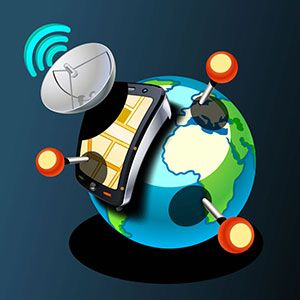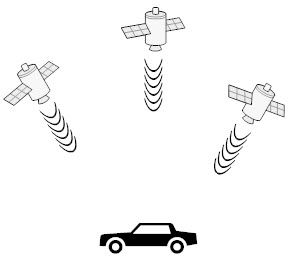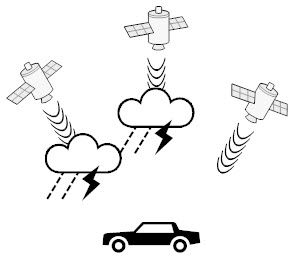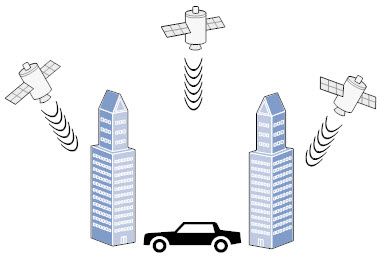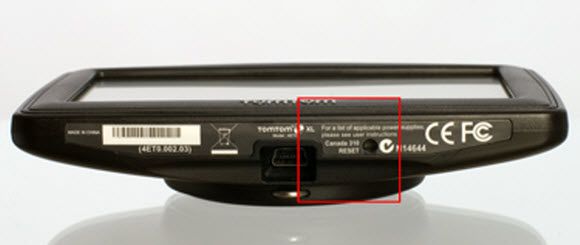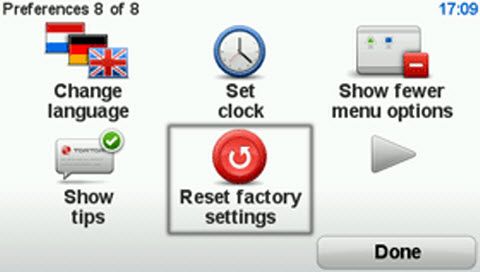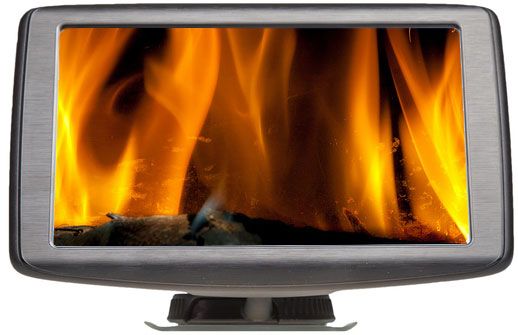Possibly the biggest boost to the male ego since chest hair, GPS Satnav units have saved us from having to "pull over and ask for directions!!!" Nuh-uh sweetie-pie, I got this with my GPS. Don't give me directions, just give me an address and I'll be there! Oh technology, we all love you, keeper of peace in the car - until there's no signal. This never happens when you're somewhere nice and safe, it always happens in places like under the bridge in Detroit, Hunt's Point in New York City, or apparently anywhere in Ireland.
So what can you do? How can you make sure that you'll get that link up that you need with the eye in the sky? Well, let's first take a look at what might be causing the sat nav signal problem.
No Line-Of-Sight
The type of signal that satellite communications uses needs to have a clear line of sight between your Satnav and the satellites it is using. To get a proper fix on your location, you'll need to be in the line of sight of at least 3 GPS satellites. Currently there are 27 in orbit -24 active and 3 spares in case one breaks down or falls out of the sky. It could happen.
As you can see in this animation of the GPS network, the number of satellites possibly visible to any spot on earth changes through the day, from 8 to as many as 12. Of course, when there are only 8 satellites visible, the chances of blocking out 6 or more is somewhat greater. This would explain why sometimes you have a signal and sometimes you don't, even when you're in the same spot. If you want to learn a little more about how GPS works, then check out the article, How GPS Works.
These satellites also broadcast their signal with only a measly 50 watts of power. To get your head around that, imagine a 50 watt light bulb in orbit over Earth. Yep, it's that weak. It might not surprise you then, that the issue could be your car windshield, if it has some types of metallic laminate or coating on it. If your GPS worked before in the same car with the same windshield that probably isn't the case. If you have replaced the windshield, tinted it, or got a different car, this could be the problem. You may need to look into getting an external antenna, if there is one available.
Knowing how weak the signal really is, even the weather can interrupt the signal. It is amazing how bad the weather really has to be to do that, but it can. This in effect is known as Rain Fade. Typically you need an intense thunderstorm, snow blizzard, or ice storm conditions to cause this issue. The storm doesn't always need to be exactly where you are at either, if the line between the satellite and your Satnav happens to pass through a storm. There isn't much you can do about it if this is the case. You probably shouldn't be driving anyway.
If you happen to be in a deep valley, like a fjord or downtown in a city with a lot of skyscrapers, you might not get all the connections that you need. Perhaps you happen to be parked right in the shadow of a building, or even in a parking lot with some sort of roof or awning over it. Even just being set back from the windshield of your car can be enough of an obstruction. General rule of thumb - if there is a shadow on it, you might not get a signal.
If you are regularly in places where you just can't get a signal, you might look into some of the offline map apps here, and of course, here.
Software Issues
Many Satnavs have a GPS Simulator mode. This mode is intended to save power and estimates where you are based on information it already has. When in this mode, the Satnav doesn't try to acquire a signal, so you need to make sure this mode is disabled.
Sometimes, it just takes a while to acquire a signal. If you're starting it up in an area where you normally use it, the Satnav already has some information to work with and can acquire a signal in seconds. If the Satnav isn't aware of your current position or the time, it may take up to 20 minutes to get the signal. You need to remain in the same spot for several minutes while the device tries to get signals. Sometimes, patience really does work. Of course, all things being in working order so far, if it takes more than 5 minutes, you may have another issue.
First, make sure that everything on your GPS device is up to date. Check the manufacturer's website to see if there are any updates necessary, either for the firmware or the maps. Once you've performed the updates, see if your device will pick up a signal.
No signal still? You may want to try what is referred to as a Soft Reset. A Soft Reset puts your device back to almost factory-settings mode, depending on the device. You may only lose your timezone setting, or you could lose all of your customization. It depends on the device and model. The Soft Reset procedures are fairly simple and usually don't require any tools, except maybe a paperclip.
For some Garmin devices, it's like forcing a restart of a Windows computer - simple as holding the power button or slide in the on-position for a few seconds. For some other Garmin devices, you remove and re-insert the battery, like you would on a smartphone. For some Tom Tom devices, it requires using a paperclip inserted in the Reset hole somewhere on the device.
Did that work? No? Well you could try doing a Hard Reset, which sets your Satnav back to the factory default savings. Eject your SD or mini-SD card and back up your information, as a Hard Reset will wipe all your settings. For many Garmin devices, you power down the device, then power it up with your finger in the bottom right hand corner. You should get a prompt asking "Erase all user data?". Press 'Yes'. The device will reset and power back on.
http://www.youtube.com/watch?feature=player_detailpage&v=DPGtTyOt-Hw
For many Tom Tom devices, a hard reset can be done through the on-screen menus. Again, make sure you've removed any memory cards and backed up all the information you can. This is a factory reset and your information will be lost.
Hardware Issues
If you've taken the steps to ensure that it isn't an issue with something being between you and enough satellites, it is possible that the issue is with the GPS unit. Many of these devices are mounted on dashboards or windshields, and we all should know that heat and electronics aren't usually friends. Perhaps it's been a terribly hot day, and the windows are up on the car. The device could reach internal temperatures that could cause the Satnav to not work. The heat may even possibly permanently damage the Satnav.
If you can, take the unit out of the car and put it somewhere at room temperature to let it cool down to normal operating temperatures. (Under 80°C and above -30°C is an estimated operating range, it may vary for your device so check the manufacturer's specifications.) Then take the unit outside and try it again.
If the GPS unit still won't acquire a signal, there's a good chance that the unit has some serious internal issues. The antenna is housed internally on most of these devices, and may have issues. There is also an internal battery, similar in function to the one on the motherboard of your computer. These do die eventually, usually around the 5 year mark - sometimes shorter, sometimes longer. Or it may simply be that the internal electronics were damaged by a power surge, being dropped, or some other hazard. If it got wet, try following the instructions in our How To Save A Wet Cell Phone Or Tablet article. It pretty much applies to Satnavs as well.
If you suspect any of these things is the issue, you could send your device in for repairs. Or, if you're terrifically handy with electronics and a soldering iron you might give it a go yourself. In which case, I'm not sure why you're reading this, you probably know more about these things than I do! However, I think with all things considered, you'll probably be further ahead if you just replace the unit. Or buy a paper map, when you stop at the gas station to ask for directions.
The Take Away
Whether you are using a dedicated GPS navigation system or just the GPS function of your smartphone, there are a myriad of things that can potentially cause your device to not pick up a satellite signal. Use your logical troubleshooting skills, and the tips above to try to solve the problem. If the problem is still unsolvable, know that there are several low-tech methods to fall back on. Which is best if you have those things in the car already, like a road almanac, and you know how to use them. You can get your unit fixed or maybe even replace it before it you head of on your next grand adventure. Even though hope for your Satnav is lost, not all hope is lost and you don't have to be either.
Have you been hearing about SLAM and wondering how it differs from GPS? Check out this article on SLAM and how it works with self-driving cars:
Image Credits: GPS Constellation, Reset Menu, Reset Button Hole, Flames, Satnav, SatNav Planet

